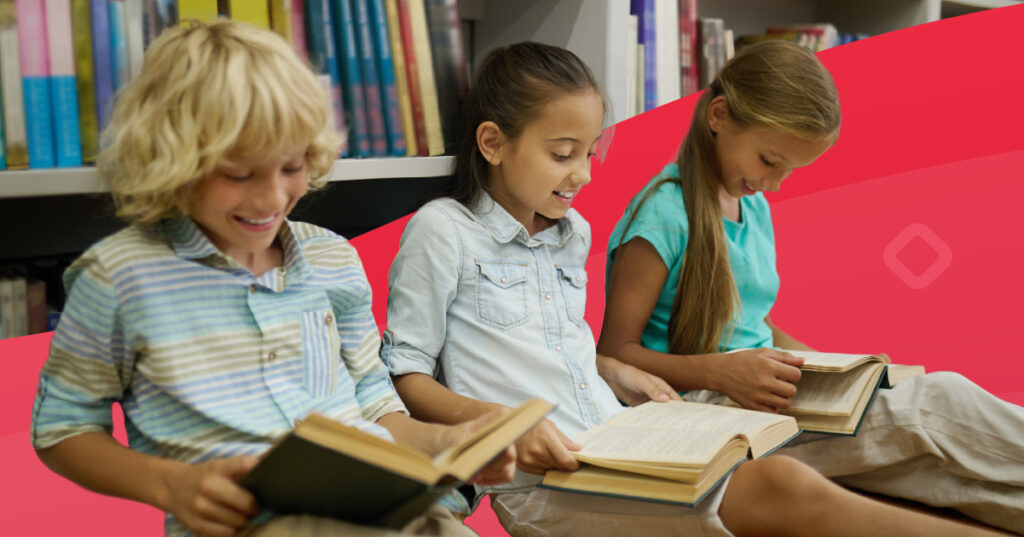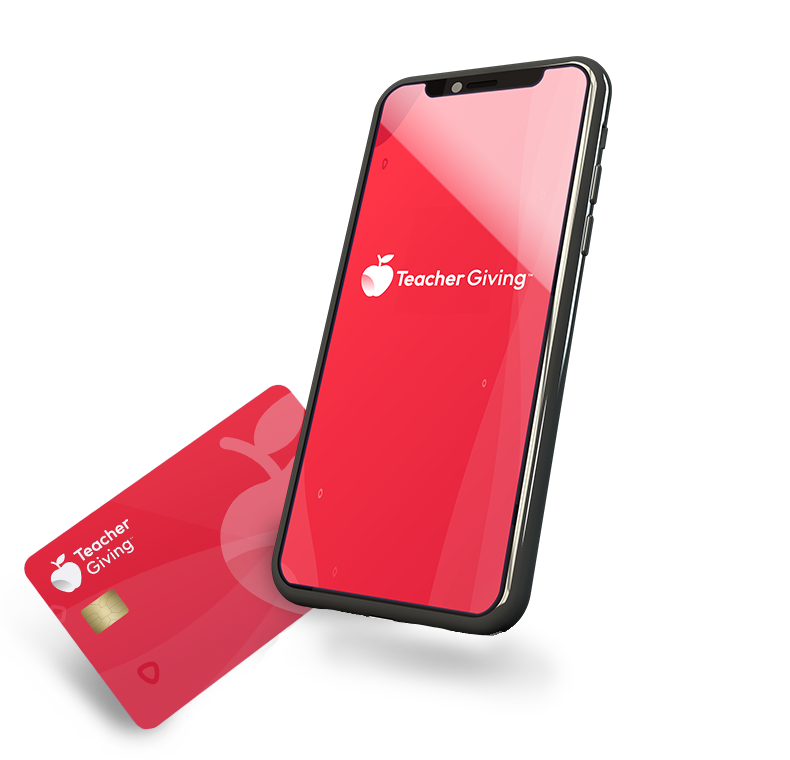Fostering a love for reading in students is a year-round mission, not just a summer endeavor. Consistent reading habits play a crucial role in a child’s development, enhancing their literacy skills, imagination, and critical thinking abilities.
At TeacherGiving, we understand the challenges educators face in providing the resources to cultivate these critical habits. As a crowdfunding platform dedicated to education, we enable teachers to raise the funds they need for books, reading initiatives, and other key learning materials.
Reading benefits students in numerous ways, including improved academic performance, greater empathy, and a love of learning that continues long after graduation. This article includes various tools and activities to make reading an exciting part of your classroom routine, keeping the spark of reading alive in your students throughout the year.
Plus, we’ve included the top recommended books for every grade—parent and teacher-approved!
The Importance of Reading Year-Round
Regular reading plays a pivotal role in a child’s overall development. It enhances vocabulary, improves comprehension skills, and fosters a deeper understanding of diverse subjects.
Students who read regularly are often better communicators, have stronger critical thinking abilities, and exhibit improved focus and concentration. By making reading a daily habit, students develop a solid foundation that supports their academic and personal growth.
Numerous studies highlight the benefits of maintaining reading habits throughout the year. One significant finding is the prevention of the “summer slide,” a term used to describe the supposed learning loss that can occur during extended breaks, according to an article published in Scientific American. “Quinn and Harvard University literacy researcher James Kim have found that summer reading programs, even home programs, boost reading skills in all kids.”
Another study found that children who read consistently perform better in school, demonstrate higher levels of creativity, and have greater empathy towards others.
By promoting reading year-round, educators can ensure that students remain engaged, retain the skills they’ve acquired, and continue to grow academically. This ongoing commitment to reading not only supports immediate educational outcomes but also instills curiosity and critical thinking in students.
Reading Ideas to Inspire Students
Explore Themed Book Lists
Themed book lists provide students with curated selections that align with their interests and the curriculum. They encourage exploration and help foster a lifelong love of reading.
Examples of Themed Book Lists:
Adventure and Exploration:
- Curate books about daring expeditions, brave heroes, and thrilling journeys.
- Include classics like “Treasure Island” by Robert Louis Stevenson and contemporary adventures like “The Explorer” by Katherine Rundell.
Animal Tales:
- Feature stories with beloved animal characters, both real and imaginary.
- Include favorites such as “Charlotte’s Web” by E.B. White and “The One and Only Ivan” by Katherine Applegate.
Historical Fiction:
- Introduce students to different periods in history through engaging narratives.
- Include titles like “Number the Stars” by Lois Lowry and “Esperanza Rising” by Pam Muñoz Ryan.
Fantasy Worlds:
- Transport readers to magical realms and mythical landscapes.
- Include classics like “Harry Potter and the Sorcerer’s Stone” by J.K. Rowling and modern fantasies like “The Lightning Thief” by Rick Riordan.
Science and Nature:
- Explore the wonders of the natural world and scientific discoveries.
- Include books such as “The Magic School Bus” series by Joanna Cole and non-fiction titles like “The Wild Robot” by Peter Brown.
Implementation:
- Display themed book lists in the classroom library or on a dedicated bulletin board.
- Encourage students to choose books from different themes based on their interests.
- Use themed book lists as inspiration for book talks, reading challenges, and literature circles to deepen engagement with the texts.
Reading Challenges and Activities
Reading challenges and activities are engaging tools that can motivate students to explore new genres, increase their reading comprehension, and develop a love for books. Here are some creative ideas to incorporate into your classroom:
- Book Bingo:
- Create bingo cards with different reading prompts or genres in each square (e.g., “Read a mystery book,” “Read a biography,” “Read a book with a blue cover”).
- Challenge students to complete a row or column to win a small prize or recognition.
- Reading Scavenger Hunt:
- Develop a list of specific elements or themes for students to find in books (e.g., “Find a book with a talking animal,” “Find a book set in a different country”).
- Encourage students to explore the classroom library or local library to complete their scavenger hunt.
- Author Study Project:
- Assign students to select an author they are interested in and read multiple books by that author.
- Have students create a presentation or poster to share what they have learned about the author’s life, writing style, and themes in their books.
- Character Interviews:
- Have students select a character from a book they have read and create a mock interview with that character.
- Encourage students to think critically about the character’s motivations, actions, and personality traits based on evidence from the text.
- Reading Olympics:
- Host a “Reading Olympics” event where students compete in teams or individually to complete reading challenges or quizzes based on books they have read.
- Award medals or certificates to celebrate students’ accomplishments in reading.
- Book-to-Movie Club:
- Select a book that has been adapted into a movie and organize a book-to-movie club.
- Have students read the book together, watch the movie adaptation, and compare and contrast the two versions in discussions or written reflections.
- Book Swap or Book Drive:
- Organize a book swap event where students can exchange books they have already read for new ones.
- Alternatively, host a book drive to collect gently used books from students, parents, and community members to expand the classroom library and promote literacy.
Implementation Tips:
- Personalize Challenges: Tailor reading challenges and activities to students’ interests and reading levels to ensure they remain engaged.
- Celebrate Progress: Recognize and celebrate students’ accomplishments with certificates, prizes, or special privileges for reaching reading milestones.
- Encourage Reflection: Provide opportunities for students to reflect on their reading experiences through discussions, written reflections, or multimedia presentations.

Creating a Reading-Friendly Classroom Environment
Tips for Setting Up a Classroom Library
1. Organize by Genre and Level: Create an inviting and easily navigable classroom library by organizing books by genre and reading level. Use labeled bins, shelves, or baskets to categorize books, making it simple for students to find their next great read.
2. Create a Cozy Reading Nook: Designate a special area in the classroom as a reading nook. Furnish it with comfortable seating, such as bean bags, pillows, or a cozy rug. Add soft lighting and decorations that make the space feel warm and inviting, encouraging students to spend time there.
3. Regularly Update the Collection: Keep your library fresh and engaging by regularly updating the book selection. Rotate seasonal books, introduce new titles, and retire well-worn copies. Involve students in the process by asking for their book recommendations and preferences.
To fund this:
- Join the TeacherGiving Community: Utilize TeacherGiving to crowdfund for new books and library resources. Create a campaign highlighting the importance of a well-stocked, up-to-date library and how it benefits students.
- Share Your Story: Share stories and testimonials from students about how new books have positively impacted their reading habits and learning experiences. Personal stories can resonate with potential donors and increase funding opportunities.
- Engage Parents and the Community: Reach out to parents, local businesses, and community members to support your crowdfunding campaign. Explain how their contributions will directly benefit the students and enhance their reading environment.
Ideas for Incorporating Reading into Daily Classroom Routines
1. Start the Day with Silent Reading: Begin each day with a period of silent reading. This sets a calm, focused tone for the day and ensures that every student gets some reading time, no matter how busy the schedule.
2. Integrate Reading into Other Subjects: Incorporate reading activities into other subject areas. For example, use historical fiction to complement social studies lessons or scientific journals to enhance science topics. This shows students that reading is a valuable skill across all disciplines.
3. Establish a “Book of the Month”: Choose a “Book of the Month” that aligns with current classroom themes or student interests. Plan activities, discussions, and projects around this book to create a shared reading experience for the whole class.
4. Encourage Reading Partnerships: Pair students with reading partners for shared reading activities. Partners can read aloud to each other, discuss books, and support each other in meeting reading goals. This fosters collaboration and accountability within the class. Plus, they’ll be excited to share their thoughts and might even make new friends.
Top Recommended Books for Every Grade
Elementary School: Grades K-2
- “Where the Wild Things Are” by Maurice Sendak – An imaginative adventure that has captivated young readers for decades.
- “The Very Hungry Caterpillar” by Eric Carle – A beloved story about a caterpillar’s transformation that teaches counting and the days of the week.
- “The Cat in the Hat” by Dr. Seuss — A whimsical and entertaining story that encourages early reading skills.
- “Curious George” series by H.A. Rey and Margret Rey — Follow the mischievous adventures of a lovable, curious little monkey.
- “If You Give a Mouse a Cookie” by Laura Numeroff — Enjoy the humorous consequences of giving a mouse a simple cookie.
Elementary School: Grades 3-5
- “Charlotte’s Web” by E.B. White – A touching story about friendship and loyalty.
- “Matilda” by Roald Dahl – The tale of a brilliant girl with extraordinary abilities who overcomes adversity.
- “Charlie and the Chocolate Factory” by Roald Dahl — The whimsical journey of Charlie Bucket inside Willy Wonka’s chocolate factory.
- “Bridge to Terabithia” by Katherine Paterson — A touching story of friendship and imagination that explores themes of loss and resilience.
- “The Tale of Despereaux” by Kate DiCamillo – An adventurous story about a brave mouse, loved by both parents and educators.
Middle School: Grades 6-8
- “The Giver” by Lois Lowry – A dystopian novel that explores complex themes of society and individuality.
- “The Outsiders” by S.E. Hinton —A classic novel about rival teenage gangs and the struggles of growing up.
- “The Lightning Thief” by Rick Riordan – The first book in the Percy Jackson series, blending mythology and modern adventure.
- “Holes” by Louis Sachar – A unique story about a boy sent to a mysterious camp, combining adventure and mystery.
- “Harry Potter and the Sorcerer’s Stone” by J.K. Rowling – The beginning of the beloved series that has captivated readers of all ages.
High School: Grades 9-12
- “To Kill a Mockingbird” by Harper Lee – A profound exploration of racism and morality in the Deep South.
- “1984” by George Orwell – A dystopian novel that delves into the dangers of totalitarianism and thought control.
- “The Book Thief” by Markus Zusak – A poignant tale set in Nazi Germany, narrated by Death, about a young girl’s love for books.
- “The Catcher in the Rye” by J.D. Salinger — A classic novel depicting the struggles of adolescence and alienation.
- “The Great Gatsby” by F. Scott Fitzgerald — A classic tale of love, ambition, and the American Dream set in the lavish world of 1920s New York.

Conclusion
In the rows of a classroom, among seats filled with students and their stories yet untold, lie a spark in young minds—the love of reading. As educators, you hold the match that ignites the flame.
By regularly updating your collections—introducing new tales, retiring worn pages, and embracing the stories your students crave, you empower them to explore worlds beyond the confines of their desks. Each turned page whispers of adventures taken, knowledge gained, and dreams nurtured.
Through TeacherGiving, you can make this vision a reality. By creating campaigns that celebrate the magic of reading, you can invite parents, communities, and kindred spirits to join in fueling curiosity and creativity through books. With their support, you can ensure that every child has access to the books that will shape their futures and inspire them to reach for the stars.We invite you to join the TeacherGiving community and take advantage of our crowdfunding platform to raise money for your reading initiatives. Together, we can empower the next generation—one book, one dream, at a time.



